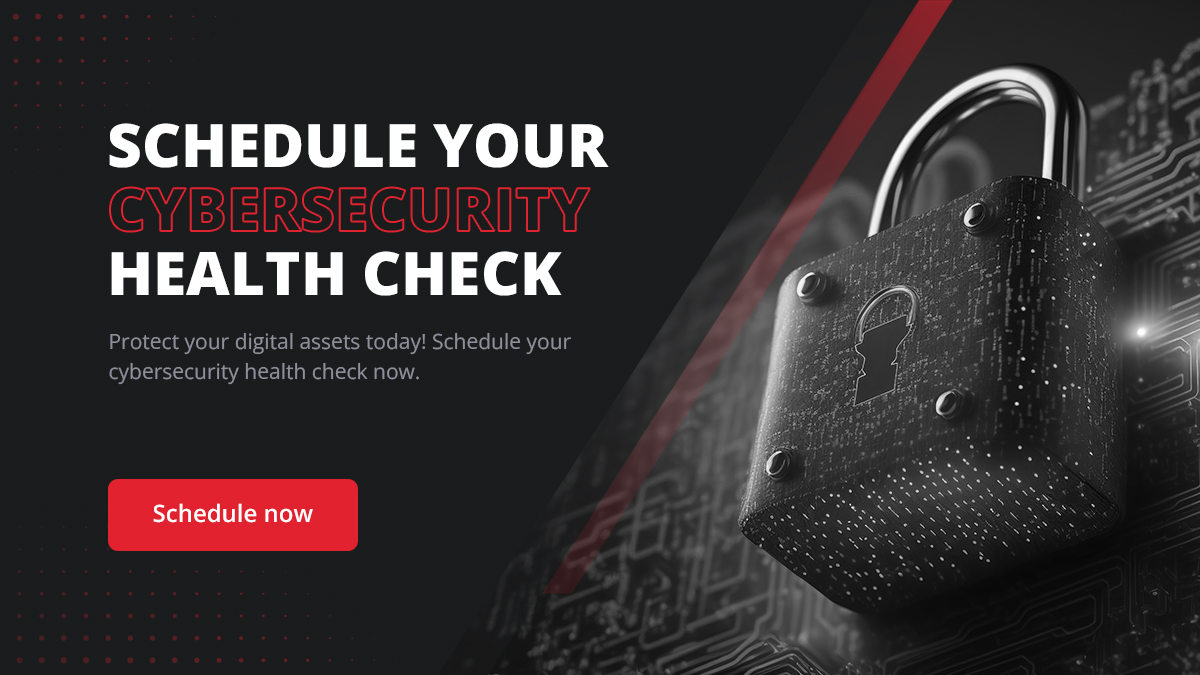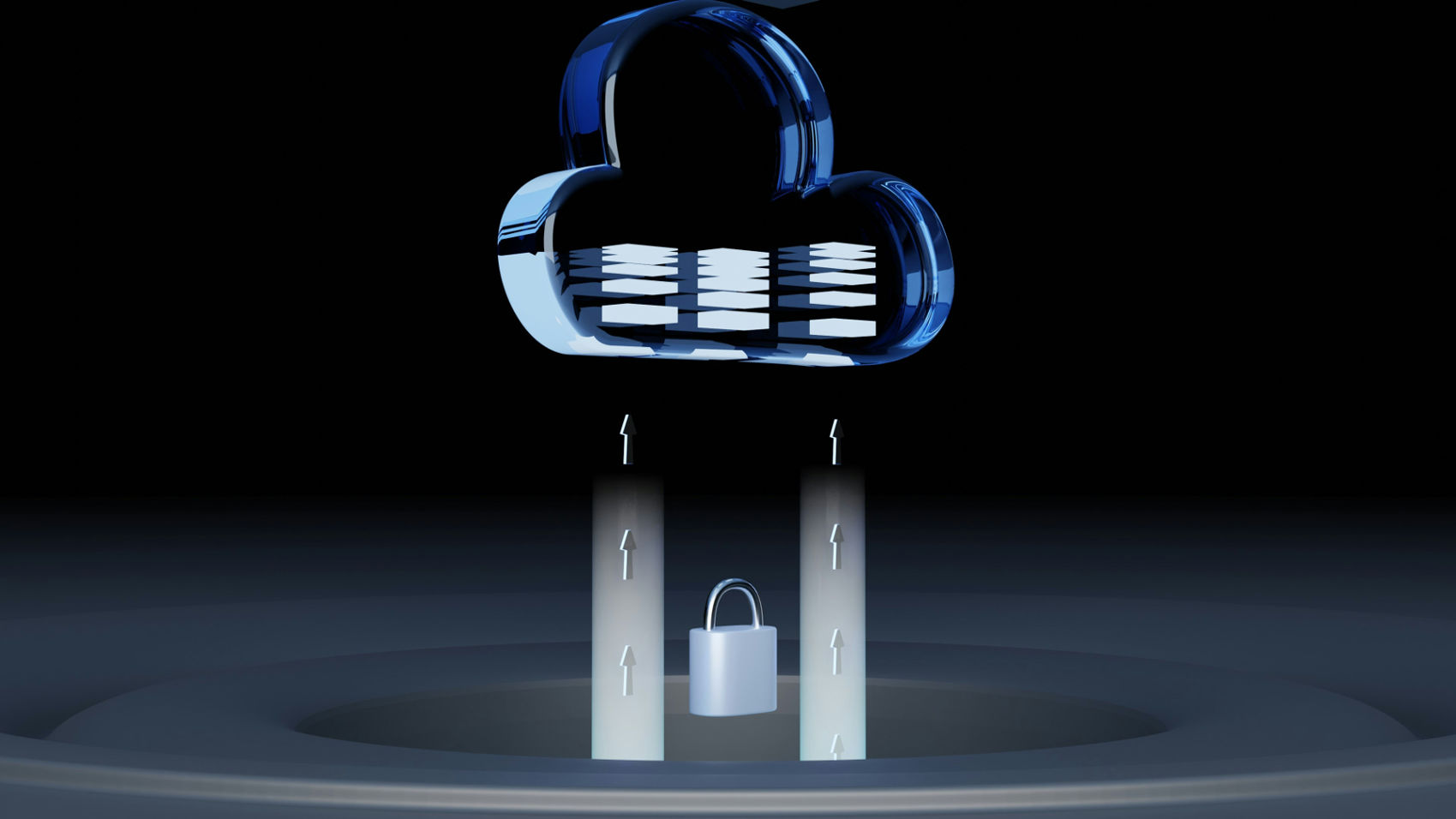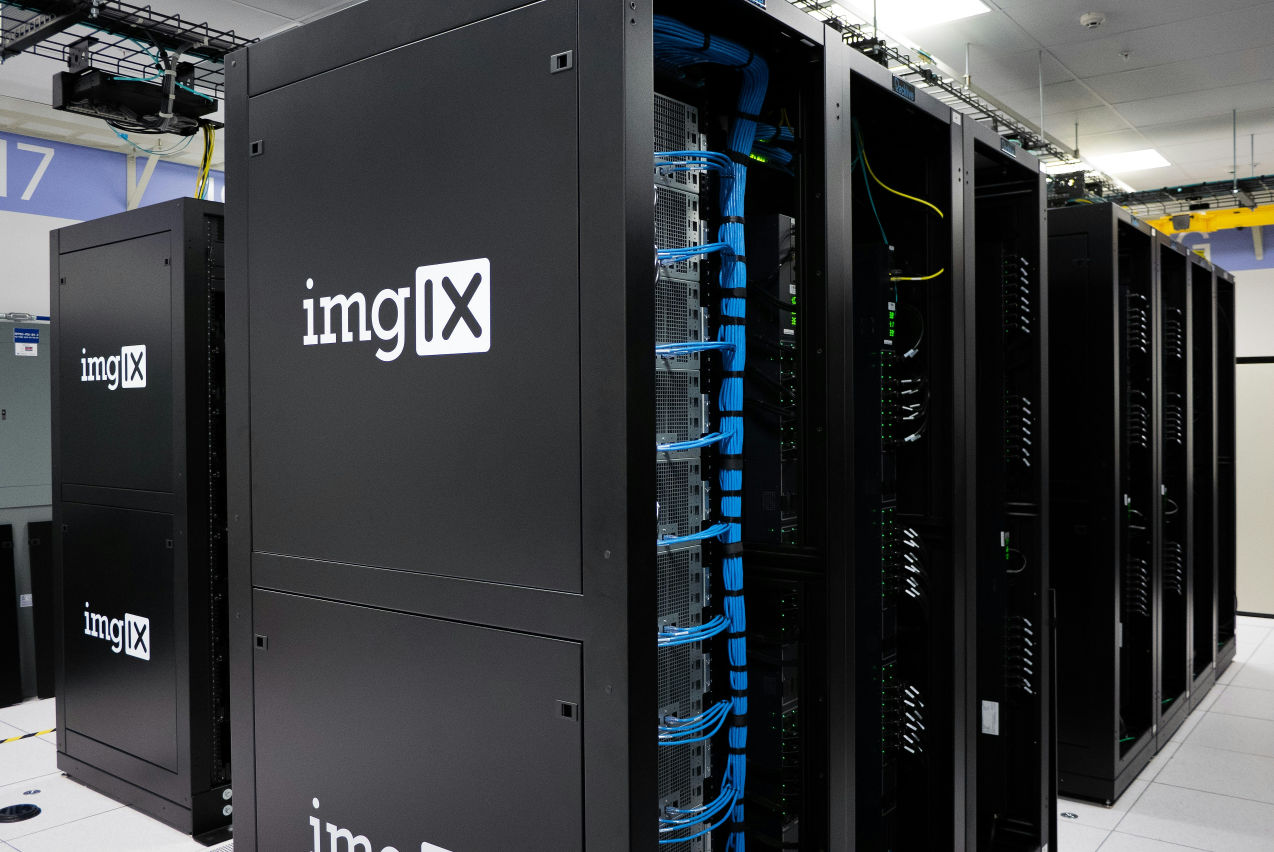How to Secure Your Business with Cyber Security Insurance

What Is Cyber Security Insurance?
In the digital age, where online threats are as common as they are diverse, the concept of cyber security insurance emerges as a beacon of protection and reassurance. This insurance serves as a financial safety net designed to mitigate the impacts of various cyber incidents that businesses and individuals might face. As we delve deeper into the intricacies of this topic, it's essential to understand not only what cyber security insurance is but also its critical role in today's interconnected world.
Explanation Of Cyber Security Insurance
Cyber security insurance, at its core, is a form of protection specifically designed to safeguard against losses stemming from cyber incidents. This type of insurance covers a range of potential issues, including data breaches, cyberattacks, and other related security threats. Unlike traditional insurance types, cyber security insurance is tailored to address the unique challenges posed by the digital realm. It provides coverage for expenses related to the investigation, data recovery, legal liabilities, and more, helping organizations and individuals bounce back from digital adversities.
Cyber Security Insurance In Today's Digital Landscape
In the current digital landscape, the importance of cyber security insurance cannot be overstated. As businesses and individuals increasingly rely on digital platforms for their operations, the potential for cyber threats grows exponentially. These threats can come in various forms, such as ransomware attacks, phishing scams, or data breaches, each carrying significant financial and reputational risks. Cyber security insurance acts as a critical layer of defense, offering financial respite and support in navigating the aftermath of cyber incidents. It's a testament to the evolving nature of risk management in a world where digital risks are as real and impactful as any physical threat.
Various Cyber Risks And Threats Faced By Individuals And Businesses
In today's digital era, the cyber risks and threats individuals and businesses encounter are vast and continuously evolving. Understanding these threats is essential for effective risk management and mitigation. Here's an overview of the various cyber risks and threats that are commonly faced:
- Phishing Attacks: These involve deceptive emails or messages designed to trick individuals into revealing sensitive information, such as passwords or credit card details. Phishing is a prevalent tactic used by cybercriminals to gain unauthorized access to personal or corporate data.
- Ransomware: This type of malware encrypts a user's files, with the attacker demanding a ransom to provide the decryption key. Ransomware can paralyze businesses, leading to significant financial losses and operational downtime.
- Data Breaches: Unauthorized access to or disclosure of personal information can have severe consequences for businesses, including financial penalties, loss of customer trust, and reputational damage. Data breaches often involve sensitive information such as financial records, customer data, and intellectual property.
- DDoS Attacks: Distributed Denial of Service (DDoS) attacks aim to overwhelm a website or online service with traffic from multiple sources, rendering it inaccessible to legitimate users. Such attacks can disrupt business operations and lead to revenue loss.
- Insider Threats: Not all cyber threats come from outside an organization. Insider threats, which may involve employees or contractors, can lead to intentional or accidental data breaches or system compromises.
- Advanced Persistent Threats (APTs): These are prolonged and targeted cyberattacks in which an intruder gains access to a network and remains undetected for an extended period. APTs are typically aimed at stealing data or surveilling network activities.
- Malware and Viruses: Malicious software can disrupt operations, steal sensitive data, and cause significant damage to systems. This category includes viruses, worms, spyware, and trojans, each designed to infiltrate, damage, or take control of a system.
- IoT Vulnerabilities: As the number of connected devices grows, so do the potential entry points for cybercriminals. Insecure IoT devices can provide attackers with a gateway to network systems, leading to data breaches or network infiltration.
- Identity Theft: This occurs when an individual's personal information is stolen and used without their permission, often leading to financial loss or legal complications.
- Social Engineering: This involves manipulating individuals into divulging confidential information or performing actions that may compromise security. Social engineering tactics are often combined with other cyber threats to increase their effectiveness.
Understanding these risks is the first step in developing robust cyber security measures and insurance policies that can effectively respond to and mitigate these threats, safeguarding both individuals and businesses in the digital age.
Is Cybersecurity Insurance The Same As Cyber Liability Insurance?
While the terms "cybersecurity insurance" and "cyber liability insurance" are closely related and often used interchangeably, there are nuances in their coverage and focus that are important to understand.
Cybersecurity insurance is a broad term encompassing various types of coverage designed to protect businesses and individuals from the financial repercussions of cyber incidents. It includes a range of policies that cover different aspects of cyber risks, from data breaches and system damage to business interruption and recovery costs.
On the other hand, cyber liability insurance specifically pertains to the liability aspects of cyber incidents. It typically focuses on covering the costs associated with legal claims and lawsuits resulting from a cyber event. For example, if a data breach occurs and a business is sued for failing to protect customer information, cyber liability insurance would help cover the legal defense costs and any resulting settlements or judgments.
Here are some key differences:
- Scope of Coverage: Cybersecurity insurance is broader, potentially covering first-party losses (such as data recovery costs, business interruption, and ransomware payments) and third-party liabilities (such as legal fees, settlements, and fines). Cyber liability insurance usually focuses on third-party liabilities alone.
- First-Party vs. Third-Party: Cybersecurity insurance covers both first-party and third-party losses, while cyber liability insurance is more focused on third-party claims.
- Focus: Cyber liability insurance is primarily concerned with the legal ramifications of a cyber incident, whereas cybersecurity insurance encompasses a wider range of financial impacts, including recovery and remediation costs.
Why Is Cyber Insurance Important?
In an increasingly interconnected world, where digital transactions and data sharing are the norms, the importance of cyber insurance cannot be understated. It serves as a crucial line of defense, providing financial support and resources during cyber incidents. Below, we delve into the specifics of why cyber insurance is so vital for today's businesses and individuals.
Understanding Cyber Risks And Threats
Cyber risks and threats are a growing concern in the digital landscape, encompassing a range of activities that can compromise the integrity, confidentiality, and availability of information. From phishing attacks to ransomware, data breaches, and DDoS attacks, these threats are not only diverse but also evolving, making it challenging for organizations to stay ahead. Cyber insurance plays a critical role in this scenario, offering a safety net that helps mitigate the financial impact of such threats, ensuring that businesses can recover and continue their operations with minimal disruption.
Recovering From A Cyber Attack Can Be Costly
The aftermath of a cyber attack can be financially draining for businesses. The costs associated with recovery are multifaceted, including technical investigations, data recovery, legal fees, public relations efforts, and compensation for customers or partners affected by the breach. For many organizations, particularly small and medium-sized enterprises (SMEs), these expenses can be crippling, potentially leading to long-term financial instability or even closure. Cyber insurance provides a crucial buffer, covering these unforeseen costs and ensuring that businesses have the financial support needed to recover and rebuild in the aftermath of a cyber incident.
Growing Need For Cyber Security Insurance
The digital landscape is continuously evolving, and with it, the complexity and frequency of cyber threats are increasing. This escalation underscores the growing need for cyber security insurance. As businesses and individuals become more dependent on digital technologies, the potential impact of cyber incidents also rises. Cyber security insurance isn't just a financial safety net; it's a critical component of a comprehensive risk management strategy, helping organizations navigate the aftermath of cyber incidents with resilience and ensuring continuity in operations.
Potential Consequences Of Cyber Attacks And Breaches
The consequences of cyber attacks and data breaches can be far-reaching and devastating. Financially, they can result in significant losses due to downtime, response costs, and potential fines for regulatory non-compliance. Beyond the immediate financial impact, breaches can erode customer trust and damage a company's reputation, effects that can be long-lasting and harder to quantify. For individuals, the consequences can range from identity theft to substantial personal financial loss. These potential outcomes highlight the critical importance of having cyber security insurance as a safeguard.
The Evolving Nature Of Cyber Threats And The Need For Proactive Measures
Cyber threats are not static; they evolve constantly, becoming more sophisticated and harder to detect. Traditional cyber defenses, while essential, may not always suffice in the face of these evolving threats. This dynamic landscape necessitates proactive measures, where cyber security insurance plays a pivotal role. It ensures that businesses and individuals have access to the necessary resources to respond effectively to incidents. Moreover, many cyber insurance providers offer preventative services, helping insured parties bolster their defenses and mitigate the risk of future attacks. This proactive approach is vital in a world where cyber threats are an ever-present and evolving challenge.
Types Of Cyber Security Insurance Coverage

Navigating the realm of cyber security insurance requires an understanding of the different types of coverage available. These coverages are designed to address the multifaceted nature of cyber risks, offering financial protection and support in various scenarios. Let's explore the primary categories of cyber security insurance coverage:
First Party Coverage
First party coverage focuses on the direct impacts a cyber incident has on the insured entity itself. This includes financial assistance for immediate response efforts, such as investigating the breach, restoring lost or compromised data, and covering the loss of business income due to system downtimes. Additionally, it can cover costs related to notifying affected parties, managing public relations to mitigate reputational damage, and addressing ransomware demands where a financial payout might be necessary to unlock encrypted data.
Third Party Coverage
Third party coverage is essential for when the insured party faces claims or lawsuits from external entities affected by a cyber incident. This could arise when customer data is compromised or when a breach results in financial loss to partners or clients. The coverage typically includes legal defense costs, settlements, and any judgments awarded, ensuring that the insured entity can address third-party claims without bearing the full brunt of the financial burden.
Privacy Liability Coverage
Privacy liability coverage is increasingly critical in an age where data breaches can lead to significant legal and regulatory repercussions. This type of coverage is geared towards the costs associated with legal liabilities arising from a breach of personal or sensitive data. It supports the insured in handling legal defenses, regulatory fines, and penalties, as well as compensations that may be required if the privacy breach leads to financial or reputational harm to individuals whose data was compromised.
Network Security
Network security coverage is a fundamental aspect of cyber security insurance, focusing on losses due to security breaches in an organization's network. This includes protection against a wide array of incidents, such as unauthorized access, the introduction of malware, and denial-of-service attacks. The coverage typically extends to the costs associated with the investigation, defense, and liability arising from these breaches, ensuring that organizations have the necessary financial support to respond to and recover from network security incidents.
Network Business Interruption
Network business interruption coverage addresses the financial losses that a business may endure when its operations are disrupted due to a cyber event affecting its network. This type of coverage is crucial for maintaining business continuity, as it provides compensation for lost revenue and additional expenses incurred while the business's network is down or impaired. In today's digital economy, where many operations are reliant on online connectivity, this coverage is essential for mitigating the economic impact of network downtime caused by cyber incidents.

Errors And Omissions Coverage
Errors and omissions coverage is particularly relevant for businesses that provide professional services or advice, including technology and cyber-related services. This coverage protects against claims of negligence, inadequate work, or inadvertent omissions in the services provided, which could lead to financial loss or legal disputes for clients. In the context of cyber security, errors and omissions coverage ensures that businesses can defend against and settle claims related to the cyber services they provide, safeguarding their financial stability and reputation in the industry.
Media Liability Coverage
Media Liability Coverage is a critical aspect of cyber security insurance, especially for organizations involved in digital media, content creation, and online communication. This coverage addresses the risks associated with content publication, safeguarding against legal issues that might arise from the content distributed by the insured entity. It typically covers legal expenses, settlements, and damages related to allegations of copyright infringement, defamation, privacy violations, and similar claims. In the age of digital media, where content can be disseminated widely and rapidly, this coverage provides a safety net, ensuring that organizations can operate without the constant fear of potential legal repercussions from their content.
Data Breach Insurance
Dara breaches can suffocate business operations. Data Breach Insurance is another pivotal component specifically designed to address the aftermath of a data breach incident. This insurance helps organizations manage the financial and reputational costs associated with the loss or theft of sensitive data. Coverage typically includes expenses related to breach notification, credit monitoring services for affected individuals, legal fees, investigation costs, and fines or penalties that may arise from the breach. In an environment where data breaches can have significant financial and reputational impacts, Data Breach Insurance offers a crucial buffer, enabling organizations to respond effectively and maintain trust with their stakeholders.
Benefits And Limitations Of Cyber Security Insurance
Cyber security insurance plays a vital role in the risk management strategy of any organization operating in the digital space. By providing financial support and resources in the event of cyber incidents, this type of insurance offers several benefits. However, it's also important to recognize its limitations to fully understand its role in comprehensive cyber security planning.

Offset Financial Losses From Cyber Incidents
One of the primary benefits of cyber security insurance is its ability to offset financial losses resulting from cyber incidents. When a business falls victim to cyber-attacks like data breaches or ransomware, the financial repercussions can be significant. These can include costs related to system repairs, data recovery, business interruption, and ransom payments. Cyber security insurance helps mitigate these losses by providing financial compensation, allowing businesses to recover more swiftly and maintain operational continuity. This support is crucial, especially for small to medium-sized enterprises (SMEs) that might not have substantial financial reserves.
Cover Legal Fees And Expenses
Another significant benefit is the coverage of legal fees and expenses. In the aftermath of a cyber incident, businesses often face legal challenges, including lawsuits from affected parties and compliance issues with data protection regulations. The legal costs of defending these actions, settling claims, and paying any mandated fines or penalties can be overwhelming. Cyber security insurance can cover these expenses, provide legal counsel, and cover settlement costs, which can be particularly beneficial in mitigating the financial impact of these legal challenges.
Support For Incident Response And Investigation
One of the key benefits of cyber security insurance is the support it offers for incident response and investigation. When a cyber incident occurs, a swift and effective response is crucial to minimize damage and recover valuable data. Cyber security insurance policies often provide access to a network of cyber security experts and incident response teams who specialize in investigating and mitigating cyber threats. These experts can help identify the breach's source, contain the incident, and prevent further damage, which is invaluable for organizations that may not have these capabilities in-house.
Aid In Business Continuity And Recovery
Cyber security insurance plays a pivotal role in business continuity and recovery. In the aftermath of a cyber incident, businesses face the challenge of maintaining or quickly resuming their operations. Cyber insurance can offer financial support to cover the loss of income during downtime and the costs associated with recovery efforts, such as system repairs and data restoration. This financial cushion helps ensure that a cyber incident does not severely disrupt business operations or lead to long-term financial hardship.
Help With Regulatory Compliance And Penalties
Cyber incidents often result in regulatory scrutiny, especially if sensitive data is compromised. Organizations are required to comply with various data protection regulations, and failure to do so can result in hefty fines and penalties. Cyber security insurance can assist in covering the costs associated with regulatory compliance, including legal representation, fines, and the implementation of required security measures post-incident. This benefit is particularly crucial for organizations that handle large volumes of sensitive data and are subject to strict regulatory requirements.
Provide Access To Cybersecurity Expertise
One of the noteworthy benefits of cyber security insurance is the access it provides to cybersecurity expertise. This aspect is crucial for organizations, especially those that may not have extensive in-house cybersecurity resources. When a cyber incident occurs, the technical complexity and required swift response can be overwhelming for many businesses. Here's how cyber security insurance plays a role in bridging this gap:
- Expert Consultation: Many cyber security insurance providers offer direct access to cybersecurity experts who can provide immediate consultation following a security breach or cyber incident. These experts bring a wealth of experience and specialized knowledge, crucial for effectively addressing and mitigating the impacts of cyber threats.
- Incident Response Teams: Some policies include services from incident response teams who are skilled in managing and responding to cyber incidents. These teams assist in investigating the breach, determining its scope, and implementing strategies to contain and mitigate the damage.
- Forensic Analysis: Cybersecurity experts can conduct forensic analysis to understand how the breach occurred, identify the extent of the data affected, and recommend measures to prevent future incidents. This analysis is vital for learning from the incident and bolstering an organization's cybersecurity posture.
- Training and Awareness: Access to cybersecurity expertise also includes opportunities for staff training and awareness programs. Experts can provide guidance on best practices, emerging threats, and preventive measures, helping to elevate the overall cybersecurity knowledge within the organization.
- Strategic Cybersecurity Planning: Beyond immediate incident response, cybersecurity experts can assist organizations in developing long-term cybersecurity strategies. This includes advice on implementing robust security measures, compliance with relevant regulations, and ongoing risk management.
Having access to such expertise through cyber security insurance enhances an organization's ability to respond to and recover from cyber incidents effectively. It also supports continuous improvement in cybersecurity practices, helping to reduce the likelihood and impact of future incidents.
Who Needs Cyber Insurance?
In the digital age, where cyber threats loom large across various sectors, the question of who needs cyber insurance is increasingly relevant. Essentially, any entity that relies on digital technology, handles sensitive data, or operates online can benefit from cyber insurance. Here's a closer look at who should consider cyber insurance and why:
- Businesses of All Sizes: From small startups to large corporations, every business that uses digital technology is vulnerable to cyber threats. Small and medium-sized enterprises (SMEs), often with limited cybersecurity resources, can be particularly susceptible.
- Healthcare Organizations: Given the sensitive nature of health records and the strict regulatory environment, healthcare providers need cyber insurance to protect against data breaches and ensure compliance with laws like HIPAA.
- Financial Institutions: Banks, investment firms, and insurance companies handle vast amounts of sensitive financial data, making them prime targets for cybercriminals. Cyber insurance is crucial to mitigate the financial and reputational risks associated with cyber incidents.
- Educational Institutions: Schools and universities store personal information of students and faculty, research data, and financial records, all of which require protection against cyber threats.
- Retailers and E-commerce Platforms: With the increasing prevalence of online transactions, retailers and e-commerce sites must safeguard customer data and financial information, making cyber insurance essential.
- Government Agencies: Government entities that store citizen data and maintain critical infrastructure need cyber insurance to protect against threats that could compromise national security or public welfare.
- Non-Profit Organizations: Even non-profits, which may handle donor information and personal data, are not immune to cyber risks and can benefit from the protection offered by cyber insurance.
- Individuals: High-net-worth individuals or those with a significant online presence may also consider personal cyber insurance to protect against identity theft, cyberstalking, and other digital risks.
Cyber Security Insurance For Small and Medium Businesses

Small and medium businesses (SMBs) are integral to the economy yet often find themselves disproportionately affected by cyber threats. The nuanced landscape of cyber risks for SMBs underscores the vital role of cyber security insurance in their operational resilience and strategic planning.
Challenges Faced By Small and Medium Businesses
Small and medium businesses navigate a complex web of cybersecurity challenges. They typically operate with more limited financial and technical resources compared to larger enterprises, which can restrict their ability to implement comprehensive cybersecurity measures. Moreover, SMBs might not have specialized cybersecurity staff, making it difficult to stay abreast of and defend against the latest cyber threats. Despite their size, they are attractive targets for cybercriminals, who may perceive them as having weaker defenses. The increasing reliance on digital technologies further amplifies their vulnerability to cyber incidents. Additionally, SMBs must contend with stringent compliance and regulatory demands, which can be particularly taxing without adequate support and resources.
Specific Cyber Security Insurance Needs Of Small and Medium Businesses
The specific needs of SMBs in terms of cyber security insurance are shaped by their unique challenges. They require policies that provide extensive coverage to safeguard against a diverse array of cyber risks, from data breaches to network disruptions. Such coverage is crucial not only for financial protection but also for ensuring business continuity in the aftermath of cyber incidents. The affordability of policies is a critical consideration, as cost constraints should not be a barrier to obtaining necessary protection. Insurance solutions must be scalable, accommodating the growth and evolving needs of the business. SMBs greatly benefit from policies that include incident response support, offering expert guidance when internal capabilities may be lacking. Additionally, access to educational resources through insurance providers can empower SMBs to enhance their cybersecurity knowledge and practices, further fortifying their defenses against cyber threats.
Benefits And Considerations For Small and Medium Businesses When Purchasing Cyber Security Insurance
Small and medium businesses (SMBs) stand to gain significantly from investing in cyber security insurance, but they also need to navigate several considerations to ensure they choose the right coverage that aligns with their specific needs and circumstances.
The benefits of cyber security insurance for SMBs are multifaceted. Firstly, it offers a financial safety net that can be crucial in mitigating the potentially devastating impacts of cyber incidents. Given the limited resources many SMBs have at their disposal, the ability to offset the costs associated with data breaches, system disruptions, and recovery processes is invaluable. Moreover, cyber security insurance can provide access to expert assistance and resources that many SMBs might not otherwise afford, including legal support, public relations assistance, and technical guidance during and after a cyber incident.
However, when considering cyber security insurance, SMBs must weigh several factors to ensure they make an informed decision. One of the primary considerations is the scope of coverage. It's vital for SMBs to thoroughly understand what is and isn't covered by a policy to ensure it aligns with their specific risk profile and business needs. The cost of the policy is another critical consideration; while cyber security insurance is an essential investment, the premiums and deductibles need to be manageable within the business's budget.
Additionally, SMBs should consider the insurer's reputation and expertise in cyber risk. Partnering with an insurer with a deep understanding of the cyber landscape and a proven track record of supporting businesses through cyber incidents can provide invaluable peace of mind and support. Finally, SMBs should consider policies that offer flexibility and scalability, allowing the coverage to evolve in tandem with the business.
What Isn’t Covered By Cyber Insurance?
While cyber insurance provides critical support and financial protection against a range of cyber threats and incidents, it's essential to understand that not all risks and costs are covered. Recognizing these exclusions is crucial for businesses to ensure they have a comprehensive risk management strategy in place. Here are some common exclusions and limitations typically found in cyber insurance policies:
- Intentional Acts: Cyber insurance generally does not cover incidents that result from intentional illegal acts or misconduct by the policyholder. This includes fraud or intentional non-compliance with industry regulations.
- Infrastructure Failures: Losses resulting from infrastructure failures, such as power outages or utility service interruptions, are usually not covered unless they were directly caused by a cyber event.
- Physical Damage: Most cyber insurance policies do not cover physical damage to property or bodily injuries resulting from a cyber attack. These types of damages are typically covered under different insurance policies.
- Contractual Liabilities: Obligations under contracts, such as penalties for failing to meet service level agreements due to a cyber incident, might not be covered unless specifically addressed in the policy.
- Known Vulnerabilities: Losses resulting from unaddressed known vulnerabilities in the system that the business failed to remedy may be excluded. Insurers expect businesses to maintain a certain level of cybersecurity hygiene.
- Future Profit Losses: Cyber insurance often does not cover projected future profits that a business might lose due to a cyber incident. The coverage is usually limited to actual, direct losses.
- War and State-Sponsored Attacks: Cyber incidents that are classified as acts of war or carried out by state-sponsored actors might be excluded from coverage, as these are considered beyond the scope of standard insurance policies.
- Intellectual Property Theft: Loss of intellectual property due to a cyber breach is often not covered. While data breach coverage can include customer data or business information, specific intellectual property theft may require additional coverage.
What To Consider When Buying Cyber Security Insurance
When venturing into the realm of cyber security insurance, businesses must navigate a variety of considerations to ensure they select a policy that aligns with their specific needs and risk profile. Here are some critical factors to keep in mind:
Coverage Scope
The scope of coverage is perhaps the most crucial aspect to consider when purchasing cyber security insurance. Businesses need to thoroughly understand what is and isn't covered under a policy. This includes examining the types of risks, incidents, and damages that are included, such as data breaches, network interruptions, ransomware attacks, and more. It's also essential to understand the policy's limits and sub-limits, as these define the maximum amount the insurer will pay for covered losses. Businesses should evaluate whether the coverage scope aligns with their risk exposure and if it addresses their most significant cyber concerns.
Compliance With Industry Regulations
Businesses must also consider how a cyber security insurance policy aligns with industry-specific regulations and standards. Many industries, such as healthcare, finance, and retail, are subject to strict regulatory requirements regarding data protection and cybersecurity. Ensuring that the insurance coverage supports compliance with these regulations is vital. This includes coverage for costs associated with regulatory investigations, fines, and penalties that may arise from a cyber incident. Additionally, businesses should assess whether the insurer offers support and resources to help navigate the complex landscape of cybersecurity regulations and compliance requirements.
Exclusions And Limitations
When considering cyber security insurance, it's critical to thoroughly understand the policy's exclusions and limitations. These define what is not covered under the policy, which can be just as important as knowing what is covered. Common exclusions can include acts of war, certain types of insider threats, or losses related to unaddressed known vulnerabilities. Limitations might cap the coverage for specific incidents or overall policy terms. Understanding these aspects ensures that a business is not caught off guard in the event of a cyber incident and can plan for additional risk management strategies to cover these gaps.
Incident Response And Support Services
Incident response and support services are pivotal components of cyber security insurance. These services can significantly influence how effectively and swiftly a business can respond to and recover from a cyber incident. Businesses should look for policies that offer comprehensive incident response services, including access to cybersecurity experts, legal advice, public relations support, and more. The quality, availability, and scope of these services can vary widely between insurers, so it's essential to choose a provider that offers robust support tailored to the business's specific needs.
Deductibles And Premiums
Deductibles and premiums are financial considerations that directly impact the cost-effectiveness of a cyber security insurance policy. The deductible is the amount a business will need to pay out of pocket before the insurance coverage kicks in. Premiums are the regular payments made to maintain the insurance coverage. Balancing these costs with the level of coverage provided is crucial. A lower premium might seem attractive, but it could come with a higher deductible or less comprehensive coverage, potentially leading to higher costs in the event of a cyber incident. Businesses should carefully assess their financial capacity to handle deductibles in the context of the broader protection the policy offers.
Insurer's Expertise And Reputation

When selecting a cyber security insurance provider, the expertise and reputation of the insurer are paramount. An insurer with a strong track record in handling cyber claims and a deep understanding of the cyber risk landscape can offer invaluable insights and support. Companies should research the insurer's history in the cyber insurance field, including their claim settlement history, customer reviews, and industry ratings. An insurer with a solid reputation in cyber security insurance is likely to provide more reliable coverage and effective support in the event of a cyber incident.
Policy Customization And Flexibility
The ability to customize and adjust a cyber security insurance policy is crucial for businesses, as it allows them to tailor the coverage to their specific needs. Cyber risks can vary significantly depending on the industry, size, and specific business practices. A good insurance policy should offer flexibility in terms of coverage options, limits, and deductibles, enabling businesses to fine-tune their policies to match their risk profile. Moreover, as a business grows and evolves, its cyber risk exposure may change, necessitating adjustments to its insurance coverage. The insurer should provide the option to review and modify the policy periodically to ensure the coverage remains aligned with the business's needs.
Data Valuation And Asset Coverage
Understanding how a cyber security insurance policy values data and covers digital assets is crucial. Data is often one of the most valuable assets a business holds, and its loss or compromise can have significant financial implications. Businesses should clarify how the insurance policy values data loss, including direct costs associated with data breaches and indirect costs such as reputational damage or loss of intellectual property. The policy should also clearly define what constitutes a covered digital asset, ensuring that critical business data, software, and other digital resources are adequately protected. This clarity helps businesses understand the potential compensation in the event of a cyber incident, ensuring that the coverage aligns with the actual value of their digital assets.
Cyber Security Insurance And Risk Management
Cyber security insurance is a vital component of a comprehensive risk management strategy, offering a financial safety net and support resources in the event of cyber incidents. However, it should be integrated with broader risk management practices to ensure holistic protection against cyber threats. Here's how cyber security insurance intersects with and enhances overall risk management:
- Financial Risk Mitigation: Cyber security insurance directly addresses the financial risks associated with cyber incidents. By providing coverage for costs related to breaches, attacks, and other cyber events, insurance helps businesses manage potential financial losses, ensuring they can recover and continue operations without devastating financial impacts.
- Resource Allocation: With cyber security insurance in place, businesses can allocate their resources more effectively. Knowing that certain financial risks are covered, organizations can focus their investments on preventive measures, employee training, and other areas of cyber risk management, optimizing their overall cybersecurity posture.
- Incident Response Planning: Cyber insurance often includes support for incident response, which is a critical component of risk management. Access to expert assistance and resources helps businesses prepare for, respond to, and recover from cyber incidents more effectively, reducing the potential damage and facilitating a quicker return to normal operations.
- Compliance and Regulatory Support: Many cyber security insurance policies offer coverage for regulatory fines and penalties, as well as support for compliance-related issues. This aspect of insurance is particularly valuable for businesses in industries subject to stringent data protection and cybersecurity regulations, aiding in risk management related to legal and regulatory compliance.
- Risk Assessment and Improvement: The process of obtaining cyber security insurance typically involves a thorough risk assessment conducted by the insurer. This assessment can provide valuable insights into a business's cybersecurity vulnerabilities and risks, informing improvements in security practices and policies and enhancing overall risk management.
- Awareness and Culture: Engaging with cyber security insurance can also raise awareness of cyber risks within an organization, fostering a culture of cybersecurity mindfulness. When employees understand the potential financial and operational impacts of cyber incidents—and the role of insurance in mitigating those impacts—they're more likely to adhere to best practices and contribute to the organization's cyber resilience.
Cyber Security Insurance And Data Breaches
Cyber security insurance plays a pivotal role in the context of data breaches, offering businesses a crucial layer of protection and support when they face one of the most common and damaging cyber threats. Data breaches not only expose sensitive information but also can lead to significant financial losses, legal challenges, and reputational damage. Cyber security insurance is specifically designed to address these issues, providing a safety net that helps businesses manage and recover from the aftermath of a data breach.
When a data breach occurs, businesses often face immediate costs related to identifying and rectifying the breach, notifying affected parties, and managing public relations fallout. Beyond these immediate costs, they may also face long-term financial implications such as legal fees, regulatory fines, and compensation for affected customers or partners. Cyber security insurance can cover many of these expenses, alleviating the financial burden on the affected organization.
Moreover, cyber security insurance often extends beyond mere financial coverage. It can provide access to expert services in the crucial hours and days following a breach, including legal counsel, public relations support, and cybersecurity specialists who can assist in investigating the breach and strengthening the organization's defenses to prevent future incidents.
However, while cyber security insurance offers substantial benefits in the face of data breaches, it is not a panacea. Businesses must understand that insurance is part of a broader risk management strategy. It is essential for organizations to maintain robust data protection measures, regularly review and update their cybersecurity practices, and foster a culture of cybersecurity awareness among their employees. These proactive measures, combined with the safety net of cyber security insurance, create a comprehensive approach to managing the risks associated with data breaches.

How Can Redzone Technologies Help with Cyber Security Insurance?
Redzone Technologies plays a significant role in enhancing an organization's cybersecurity posture and its approach to cyber security insurance. By offering expertise and advanced solutions, Redzone Technologies can aid businesses in understanding, selecting, and maximizing the benefits of their cyber security insurance policies.
Key Partnerships
Redzone Technologies establishes key partnerships with leading cyber security insurance providers to offer clients comprehensive coverage options that are well-suited to their specific needs and risk profiles. These partnerships enable Redzone to provide up-to-date information on the best practices and latest trends in cyber security insurance, ensuring that clients receive the most relevant and effective coverage. Furthermore, Redzone can facilitate the integration of insurance considerations into the broader cybersecurity strategy, ensuring that coverage aligns with the organization's risk management framework.
Featured Solutions/Related Services
Redzone Technologies offers a range of solutions and services that complement cyber security insurance, enhancing an organization's overall cybersecurity defenses:
- Virtual Security Operations: Our Virtual Security Operations offers expertly managed security services that monitor and protect your digital environment around the clock.
- Risk Assessment and Management: By conducting thorough cybersecurity risk assessments, Redzone helps organizations identify their vulnerabilities and potential threats. This information is crucial for determining the appropriate level and scope of cyber insurance coverage needed. Explore the options at RedZone Products Featuring a selection of security products tailored to address specific challenges in safeguarding digital assets.
- Incident Response Planning: Redzone assists organizations in developing and implementing effective incident response plans. This preparation is vital for minimizing the impact of cyber incidents and is often a requirement or factor in cyber security insurance policies.
- Compliance and Regulatory Guidance: Redzone provides expertise in navigating the complex landscape of cybersecurity regulations. Ensuring compliance not only mitigates the risk of legal and financial penalties but can also influence the terms and costs of cyber security insurance.
- Cybersecurity Training and Awareness: Redzone offers training programs to enhance the cybersecurity knowledge and awareness of an organization's workforce. Educated employees can significantly reduce the risk of incidents that could lead to insurance claims.
Conclusion
Cyber security insurance has emerged as a critical component in the arsenal of tools available to organizations aiming to safeguard their digital assets and operational continuity in the face of escalating cyber threats. As we have explored, this type of insurance offers a financial safety net and access to vital resources and expertise, enabling businesses to recover more effectively from cyber incidents like data breaches, ransomware attacks, and other cyber-related disruptions.
However, it's crucial for organizations to recognize that cyber security insurance is not a standalone solution but a complementary element of a broader, proactive cyber risk management strategy. This strategy should include robust cybersecurity practices, employee training, incident response planning, and adherence to industry regulations and standards. By integrating cyber security insurance with these practices, organizations can ensure a more comprehensive defense against the multifaceted and evolving nature of cyber threats. RedZone delivers thorough IT Security Assessment Professional Services to identify vulnerabilities and strengthen defenses.For more information on securing your organization's future with proactive cybersecurity measures, Contact Us today.
For small and medium businesses, which often face unique challenges due to resource constraints, cyber security insurance is particularly valuable. It provides a level of protection that might otherwise be unattainable, helping these businesses survive and thrive despite the increasing risks in the digital landscape.
FAQs
How Much Does Cyber Security Insurance Cost For Businesses?
The cost of cyber security insurance varies widely depending on several factors, including the size of the business, the industry in which it operates, the type of data it handles, and its cybersecurity practices. Generally, insurers assess the risk level of a business based on its exposure to potential cyber threats and its existing cybersecurity measures. A small business with minimal digital assets and low risk might pay a few thousand dollars annually, while a large corporation with significant digital assets and higher exposure could pay hundreds of thousands or even millions annually. It's crucial for businesses to get quotes from multiple insurers and carefully assess what is included in the coverage to ensure it meets their specific needs.
Can Cyber Insurance Policies Be Tailored To Specific Industries, And If So, How?
Yes, cyber insurance policies can be tailored to specific industries, recognizing that different sectors face unique risks and regulatory requirements. Insurers often offer customized policies that address the particular concerns and compliance needs of industries like healthcare, finance, retail, and manufacturing. For instance, a healthcare provider would need coverage that addresses HIPAA compliance and the protection of patient health information, while a financial institution would require coverage that considers financial data and regulatory standards specific to the finance industry. Tailoring a policy involves assessing the specific risks, data types, and regulatory environment the business operates in, allowing insurers to provide coverage that aligns with the industry's unique needs and challenges.
What Role Do Third-Party Vendors And Partners Play In An Organization's Cyber Insurance Coverage?
Third-party vendors and partners play a significant role in an organization's cyber insurance coverage, primarily because they can introduce additional risks and potential points of entry for cyber threats. When a business engages with third-party vendors or partners, especially those with access to its networks or data, it effectively extends its cyber risk landscape to include the cybersecurity practices and vulnerabilities of these third parties.
Cyber insurance policies often cover third-party liabilities, meaning they protect scenarios where a cyber incident involving a third party leads to data breaches or other security issues affecting the insured organization. However, businesses need to clearly understand the extent of this coverage, as some policies may have limitations or exclusions related to third-party vendors.
Organizations are encouraged to conduct due diligence on their vendors' cybersecurity practices and ensure that their cyber insurance coverage aligns with the level of risk these third parties introduce. Additionally, businesses might consider requiring their vendors to have their cyber insurance policies as part of their risk management strategy.
Implications Of Not Having Cyber Insurance For International Business Operations?
For international business operations, not having cyber insurance can carry significant implications, given the increased complexity and scope of risks involved. International businesses often have to comply with a variety of cybersecurity regulations across different jurisdictions, and a cyber incident can have far-reaching legal, financial, and reputational consequences across multiple countries.
Without cyber insurance, an international business would have to bear all the costs associated with a cyber incident, including but not limited to, forensic investigations, data recovery, legal fees, regulatory fines, and customer notifications across different regions. These costs can be substantial and could jeopardize the financial stability of the business.
Moreover, the lack of cyber insurance might impact the business's ability to respond effectively to a cyber incident, potentially prolonging recovery time and exacerbating the damage. It could also affect the business's reputation, as customers and partners may perceive the lack of insurance as a lack of preparedness and commitment to protecting their data.
 Security Updates
Security UpdatesUnderstanding IT Compliance: Scope, Benefits, and Challenges
Discover what IT compliance is, its importance, benefits, risks of non-compliance, frameworks, and how to achieve robust IT compliance in your organization.
 Security Updates
Security UpdatesImplement Secure Browsing with Powerful SSL Decryption
Explore the essentials of SSL decryption, its importance, challenges, and best practices for enhancing security and compliance for business in a detailed guide
 Security Updates
Security UpdatesTransitioning from Proxy Firewalls to Endpoint Security
Explore the evolution from proxy firewalls to endpoint security, enhanced threat detection, data encryption, and comprehensive protection for modern networks.
 Security Updates
Security UpdatesExpert IT Risk Assessment: Protect Your Business Today!
Mitigate potential IT threats with our comprehensive risk assessment guide, ensuring your digital infrastructure. Ensure your business is secure an...
 Security Updates
Security UpdatesEssential Guide to Best Practices in Compliance Security
Explore essential strategies for compliance security in this comprehensive guide. Learn about safeguarding your business and meeting regulatory sta...
 Security Updates
Security UpdatesSecure Your Data with Expert Cloud Database Solutions
Learn efficient solutions and secure your cloud databases with encryption and compliance features, ensuring data safety and privacy across all plat...
 Security Updates
Security UpdatesA Guide to Cloud Network Technology: Benefits and Types
Unlock the potential of cloud network technology for seamless connectivity. Learn and scale solutions that drive business innovation and growth via...
 Security Updates
Security UpdatesAffordable Managed IT Services for Small Businesses
Explore top-managed IT services for small businesses to boost efficiency and security. Get expert insights and practical tips to optimize your IT o...
 Security Updates
Security UpdatesSecure Your Network with Gateway Security Solutions
Explore the essentials of gateway security: learn about its importance for network protection and best practices to safeguard your digital assets e...
 Security Updates
Security UpdatesDisaster Recovery Testing: Ensure Business Continuity
Explore effective disaster recovery testing strategies in this guide to maintain business continuity, prevent data loss, and minimize downtime duri...
 Security Updates
Security UpdatesMaximizing Security: Vulnerability Management Lifecycle
Explore the complete guide to the Vulnerability Management Lifecycle to boost your cyber resilience and secure your business IT infrastructure effe...
 Security Updates
Security UpdatesYour Network with Endpoint Security Management
Explore our comprehensive guide on Endpoint Security Management to understand its importance, how it works, and best practices for robust network s...
 Security Updates
Security UpdatesEnsuring Security Compliance: Tips, Insights & Strategies
Discover the essentials of security compliance, its importance, frameworks, and tools. Learn how to protect data and meet regulatory standards effe...
 Security Updates
Security UpdatesBoost Your Security with Internal Penetration Testing
Dive into internal penetration testing with our in-depth guide. Learn the essentials, techniques, and best practices to fortify your cybersecurity ...
 Security Updates
Security UpdatesEgress vs Ingress: A Guide to Data Traffic Management
Understand Egress vs Ingress in data management. Learn and explore their roles, traffic analysis, risks, and best practices for network and cloud s...
 Security Updates
Security UpdatesPrevent Credential Harvesting to Protect Your Precious Data
Understand credential harvesting. Learn how it works, common techniques, its impact, and strategies to prevent and mitigate attacks to secure your ...
 Security Updates
Security UpdatesSecure Your Big Data: Top Solutions for Data Security
Protect your valuable data with our robust big data security solutions. Learn about the threats and Safeguard against cyber threats and ensure comp...
 Security Updates
Security UpdatesSecure Your Network with Advanced Management Solutions
Explore the details of comprehensive network security management: Learn key strategies, best practices, and tools to safeguard your digital environ...
 Security Updates
Security UpdatesGuide to On-Path Attacks: Protecting Your Cybersecurity
Learn about on-path attacks in this comprehensive guide, exploring definitions, types, consequences, and key prevention strategies to safeguard you...
 Security Updates
Security UpdatesExploring Managed Cloud Services: A Comprehensive Guide
Dive into the Managed Cloud Services with our in-depth guide. Explore benefits, types, and best practices to enhance your business's cloud strategy...
 Security Updates
Security UpdatesComprehensive Guide to Ubiquitous Computing: Impact & Future
Explore the details of ubiquitous computing, from its core concepts and layers to its societal impact, key technologies, applications, and future p...
 Security Updates
Security UpdatesClone Phishing Explained: Detection and Prevention Guide
Discover how clone phishing works and its impact. Learn effective strategies to identify, prevent, and respond to these sophisticated email threats...
 Security Updates
Security UpdatesHow to Secure Your Business with Cyber Security Insurance
Explore the essentials of Cyber Security Insurance, covering its importance, types of coverage, benefits, and considerations for businesses in the ...
 Security Updates
Security UpdatesEfficient Data Spooling Solutions For Streamlined Operation
Learn How To Efficiently Manage And Store Your Data With Our Reliable Data Spooling Services. Keep Your Information Organized And Accessible With T...
 Security Updates
Security UpdatesMaximizing Compliance & Risk Management: Expert Strategies
Learn how to ensure business success with effective compliance and risk management strategies. Explore definitions, differences, frameworks, and ch...
 Security Updates
Security UpdatesUnderstanding MDF vs IDF: Key Differences & Benefits
Explore the crucial differences and examples between MDF and IDF in networking, understanding their roles, functions, and impact on network infrast...
 Security Updates
Security UpdatesRedZone Wins CRN's Top Security 100 & MSP 500 Awards 2024
RedZone Technologies earns CRN's Security 100 & MSP 500 Awards, affirming its leadership and innovative approach in the cybersecurity and IT manage...
 Security Updates
Security UpdatesJames Crifasi Speaks on Cybersecurity at Tech Conference
Join James Crifasi, CTO & COO of RedZone Technologies, at the Tech Conference as he explores cybersecurity's role in driving business growth and ad...
 Security Updates
Security UpdatesRedZone's James Crifasi Wins SonicWall's Technical Hero Award
CTO James Crifasi of RedZone Technologies earns SonicWall's Technical Hero of the Year, exemplifying unparalleled dedication to cybersecurity and I...
 Security Updates
Security UpdatesHow to Encrypt Email in Outlook
Learn how to encrypt email in Outlook with our step-by-step guide. Secure your messages using S/MIME, Office 365 Encryption OME, and add-ins for pr...
 Security Updates
Security UpdatesWhat Is Security Monitoring? Importance and Tools
Explore the importance of security monitoring, its key roles, types, and how it protects organizations against threats, ensuring compliance and pro...
 Security Updates
Security UpdatesServer 2012 R2 End of Life: Implications and Next Steps
Learn about Server 2012 R2 end of life: Understand its impact, key dates, risks post-EOL, and explore upgrade options and migration strategies for ...
 Security Updates
Security UpdatesProtect Personal Data: Smishing and Phishing Prevention
Know how to identify and protect against smishing and phishing attacks. Learn the techniques, types, and preventive measures for personal and busin...
 Security Updates
Security UpdatesSmurf Attack Guide: Prevention & Detection Strategies
Explore prevention & recovery from Smurf Attacks: Understand DDoS defense, detection signs, and secure network practices in our detailed cybersecur...
 Security Updates
Security UpdatesWhat is a Bad USB Attack, and How Do You Prevent It?
Learn about Bad USB attacks, their various forms, and strategies for safeguarding devices. Learn how to mitigate risks with effective prevention te...
 Security Updates
Security UpdatesKey Differences Between DOS Attack vs DDOS Attack
Explore the key differences between DDoS vs DoS attacks, their types, impacts, and prevention strategies in our comprehensive guide to enhance cybe...
 Security Updates
Security UpdatesUnderstanding the Impact of a Ping of Death Attack
Explore the ins and outs of Ping of Death attacks. Understand how they work, their impact on networks, and strategies to prevent them to keep your ...
 Security Updates
Security UpdatesThe Power of the Human Firewall: Your First Line of Defense
Discover the critical role of the human firewall in cybersecurity, combining employee vigilance with technology to protect against cyber threats ef...
 Security Updates
Security UpdatesStateful Firewall vs. Stateless Firewalls: What's the Difference?
Learn the key differences between stateful and stateless firewalls and how they protect your network. Discover the right choice for your security n...
 Security Updates
Security UpdatesUnderstanding the 4 Levels of PCI Compliance
Explore PCI DSS Compliance with RedZone: Key steps to protect card data and ensure secure transactions. Learn about compliance levels and tips for ...
 Security Updates
Security UpdatesWhat Is a Security Breach and How to Prevent Them
Learn how to effectively guard your business against security breaches with RedZone Technologies. Discover simple steps to keep your data safe and ...
 Security Updates
Security UpdatesUnderstanding Tailgating in Cybersecurity
Understand tailgating attacks in cybersecurity: what they are, how they work, and effective strategies for prevention to keep your business...
 Security Updates
Security UpdatesWhat is a Managed Service Provider and Its Benefits
Explore the role of Managed Service Providers (MSPs) in enhancing IT efficiency and cybersecurity for businesses, covering benefits, servi...
 Security Updates
Security UpdatesBreach Prevention: 5 Best Practices to Protect Your Data
Learn about data breaches: what they are, their impact, and how to prevent them. Explore best practices for securing your business against cyber th...






